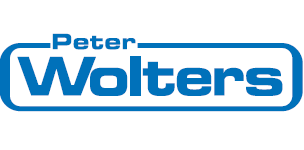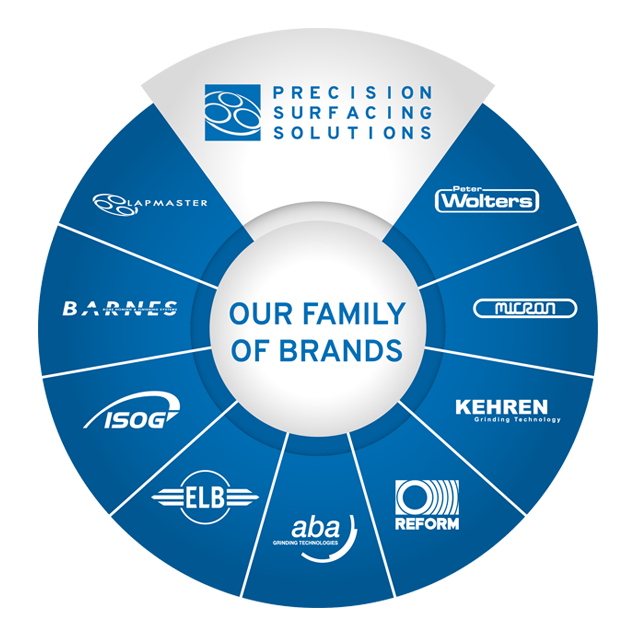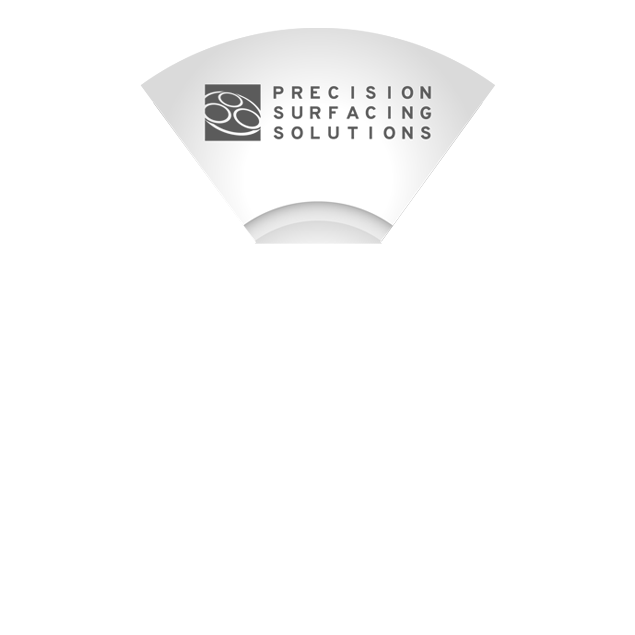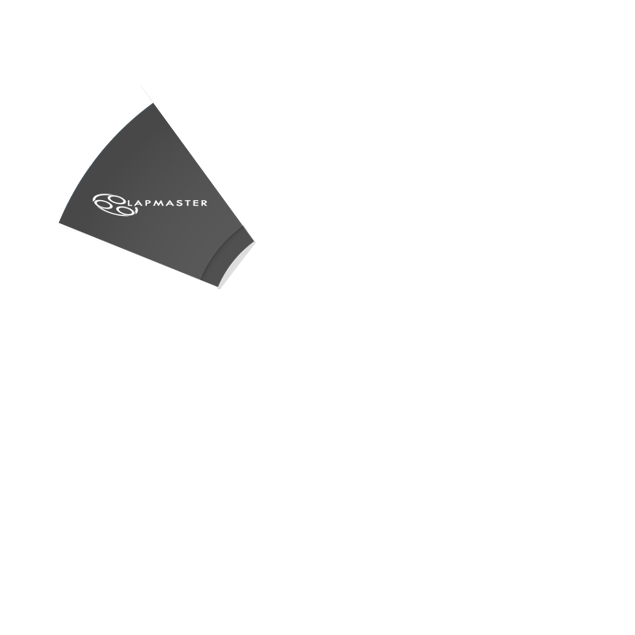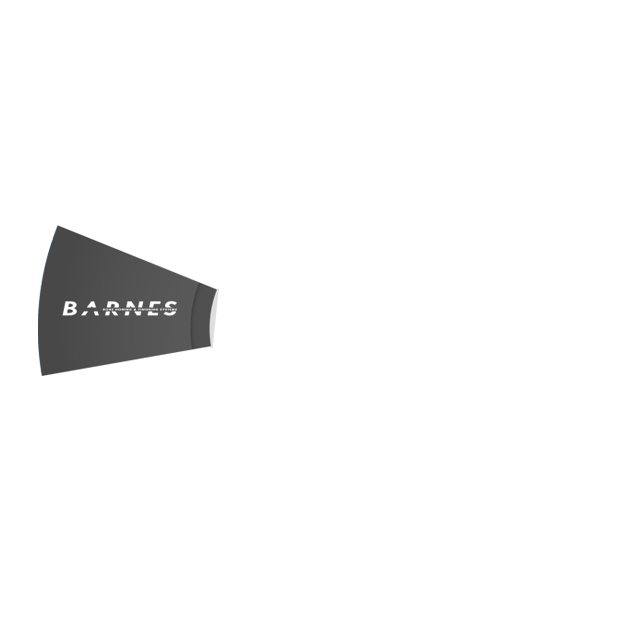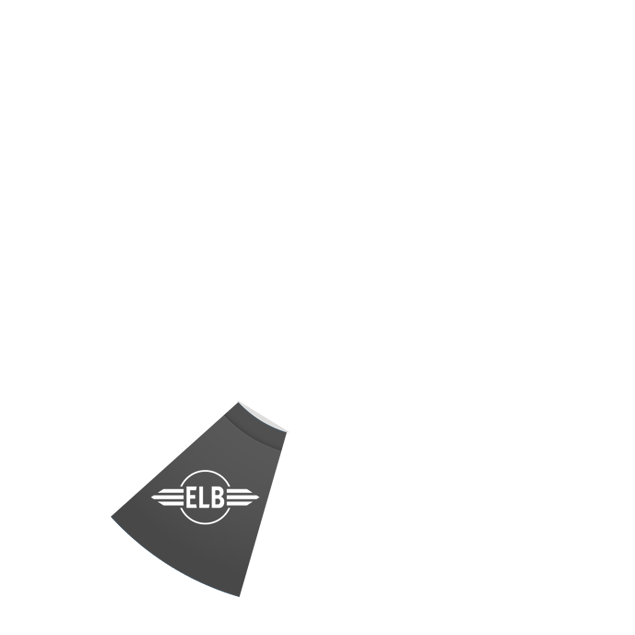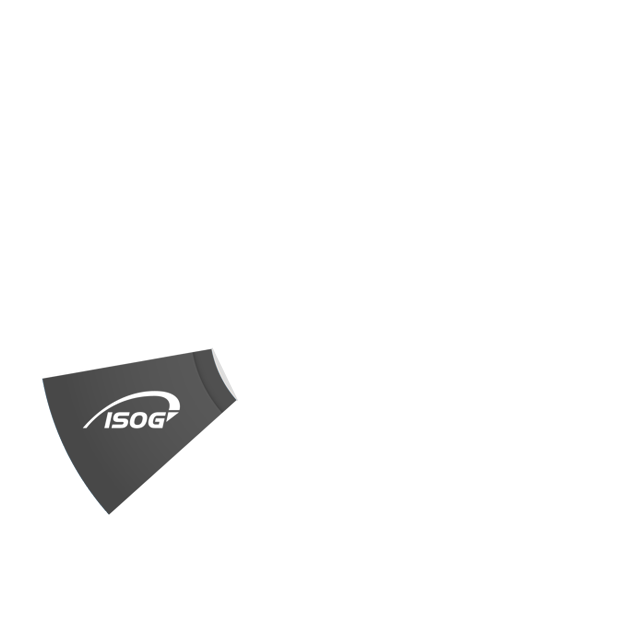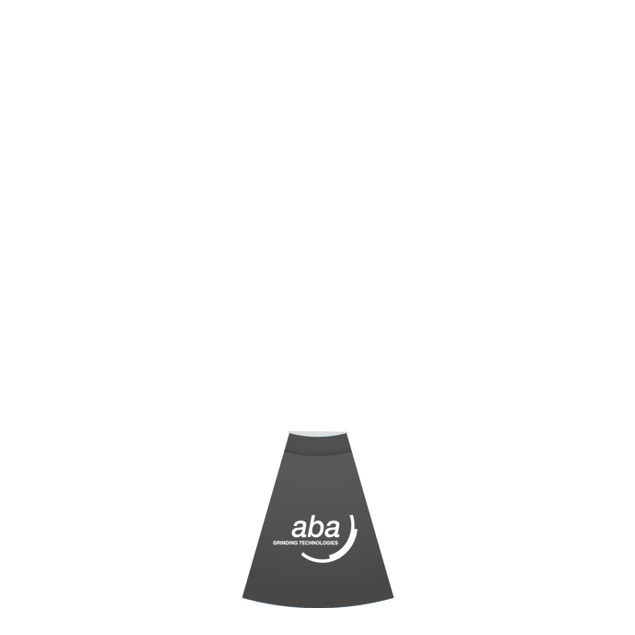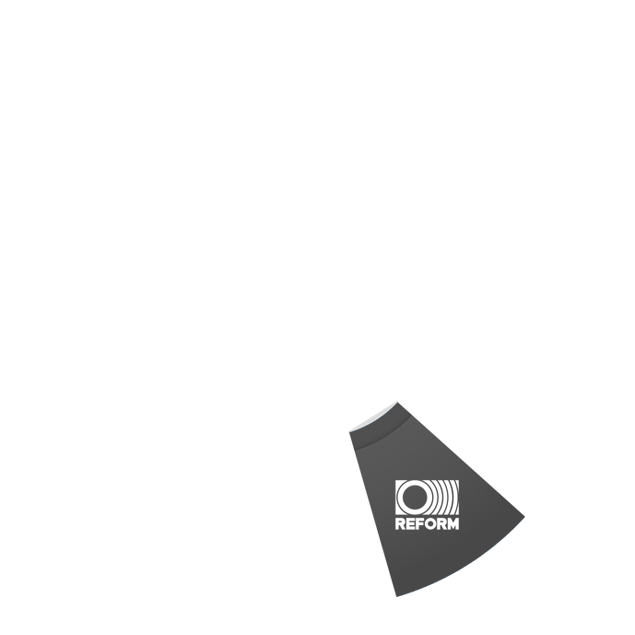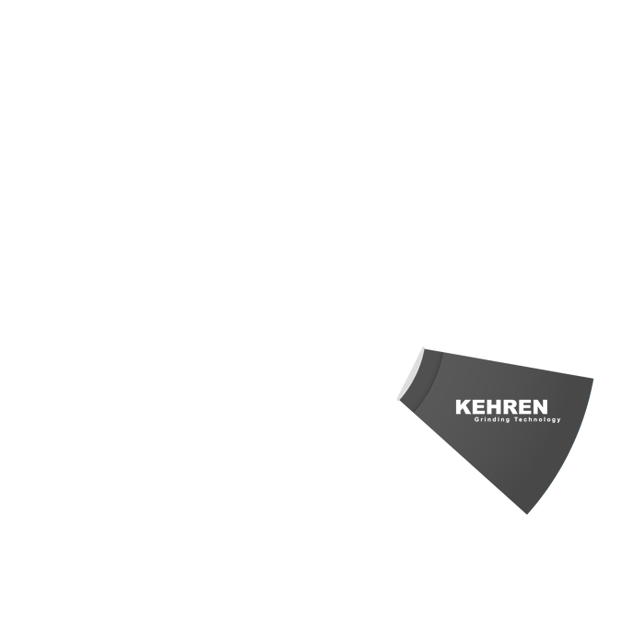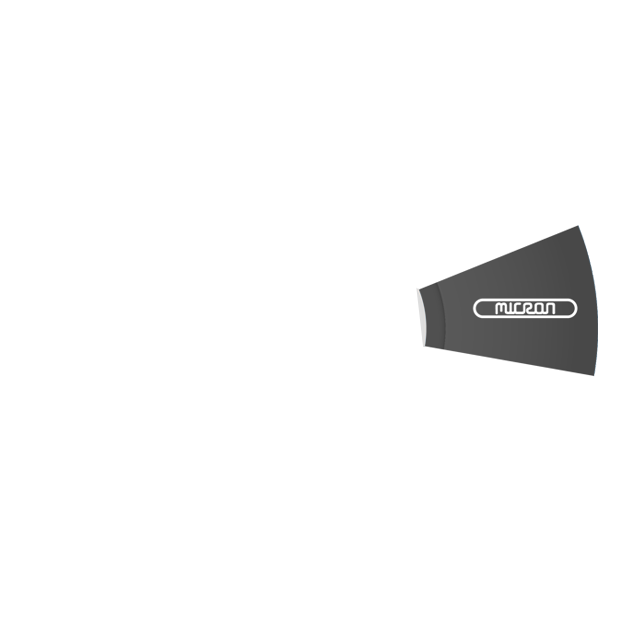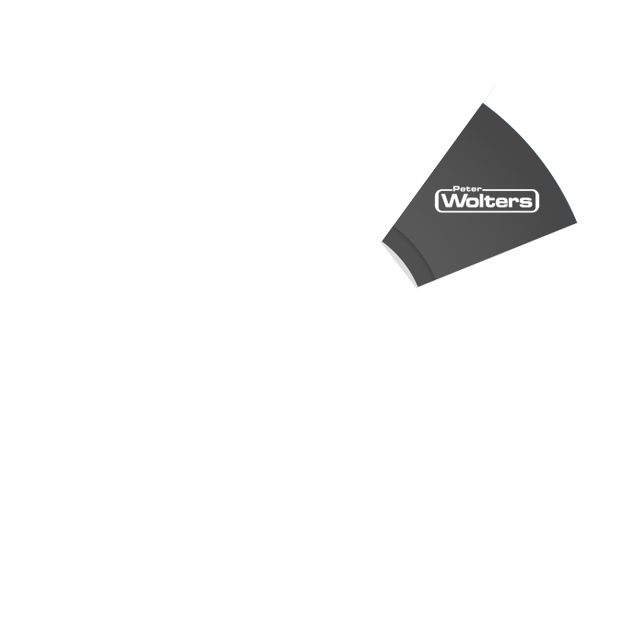Hand Polishing Stands / Polishing Papers
Hand Polishing Stands
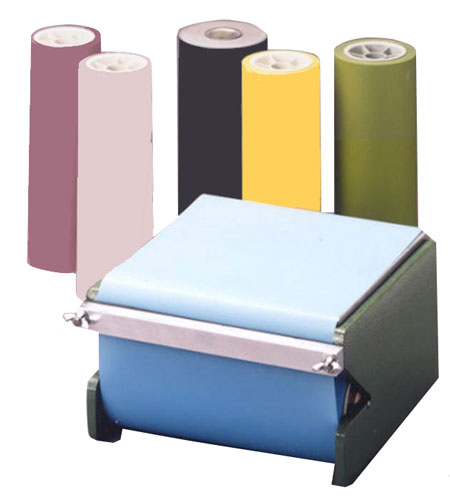
Lapmaster offers two sizes of polishing stand designed to contain a 150-foot long roll of coated abrasive paper. The lapped steel surface plate or “stage” of the two sizes of stand are 12” and 18” square. Two opposing edges of the stage are milled to a radius to prevent tearing the abrasive paper when it is tensioned across the stage surface. A very slight convex curvature is lapped into the stage surface to prevent the sharp edges of components from cutting the abrasive paper. The stage is supported in a cast aluminum base that also serves to contain a roll of abrasive paper on a wood dowel rod.
Two retaining bars on opposing sides of the stage serve to captivate the abrasive paper after it is pulled across the stage surface. Located underneath the stage, opposite the side with the paper roll, are two vertically oriented thumb-screws. When turned clockwise the screws elevate the stage to remove any slack in the abrasive paper, which will further reduce the occurrence of tearing the paper with a components sharp edge.
The single most common type and size of abrasive paper used on the polishing stand is 4/0 (600-grit) emery paper. This paper will generate a reflective finish on most common non-hardened metals and is the preferred technique for polishing metals prior to light band inspection.
Should it be necessary to restore the steel stage surface to its original condition, it must be lapped flat on a lapping machine or returned to Lapmaster. Lapmaster’ contract lapping department will provide a price quotation for reconditioning the stage. The price is variable and will depend on the condition of the stage as received.
Polishing Papers
Lapmaster offers 150-foot long rolls of coated abrasive paper in three abrasive material types and a multitude of abrasive sizes.
Emery is a relatively soft naturally occurring mineral. It can be used to cut materials of hardness less than Rockwell 55 C scale. The 4/0 emery is the only paper offered in individual flat sheets measuring 9” by 13-3/4” in addition to the standard size roll.
Silicon carbide paper rolls are offered in grit sizes for high stock removal applications especially materials with hardness exceeding Rockwell 55 C scale.
Aluminum oxide coated precision plastic Mylar film with precision micro-graded abrasive is used to remove stock or polish materials where more precise surface roughness control is required. Carbon graphite is a material that can be successfully polished with 9-micron and smaller particle size aluminum oxide paper.
Hand Polishing Stands / Polishing Papers How-to
Setting Up the New Polishing Stand
The polishing stand is shipped inverted in this heavy-duty carton. This is because of the steel stage surface creating a top-heavy assembly and unstable carton. Remove the aluminum base unit of the stand from the carton and place it right side up on a workbench. Carefully remove the steel stage, it is a heavy item with sharp edges.
Use mineral spirits (paint thinner) to remove the rust preventive from the stage. During the life of the stand periodically inspect the lapped surface and adjacent edges for any nicks or burrs that could cause the paper to tear. If a defect is found, it can be carefully removed with a honing stone or mill file.
Place the stage into the recess formed on the top of the base unit. Be sure the lapped surface is facing up. Also be sure to orient the two opposing radius milled edges of the stage in line with the direction of the paper movement. The radii help prevent paper tearing. Reach under the front edge of the base unit and locate the two stage raising thumbscrews that extend through the top surface of the base unit. Turn the screws clockwise to raise the stage above the height of the clamp bar. This will allow the polishing paper to be held tight between the clamp bar and base unit without interference from the steel stage.
Remove the roll of paper, shipped with the stand, from the wood dowel. If the stand was ordered without paper, remove the appropriate paper from a carton. Remove the protective paper wrapping from the roll and remove the tape holding the paper roll closed. Place the roll on the wood dowel and insert into the polishing stand base. Be sure to orient the roll so the loose end is facing up.
Loosen the wing nuts of the two bar clamps and slide the paper up through the gap between the bar and the base, across the surface of the steel stage and down the gap between the opposing bar. Align the paper properly across the stage and tighten the bar clamp nearest the paper roll. Pull remaining slack from the paper and tighten the front bar clamp. 6. Reach under the front recess of the base unit and tighten the two thumbscrews until the polishing paper is stretched tight against the stage surface. The polishing stand is now ready to use.
Polishing On the Polishing Stand
Once the polishing stand is set up with new abrasive paper, the paper should be broken down. This is done to eliminate any large particles of abrasive glued to the paper (this procedure is not necessary when using precision Mylar-backed aluminum oxide paper). These large particles if left on the paper surface are a source of deep scratches. Remove any large particles by rubbing a scrap component across the surface of the paper. Be sure to contact the entire paper surface.
Remove all loose particles by wiping the abrasive paper surface with alcohol on a clean shop towel. The paper is now ready to polish on.
Clean the components extremely well after lapping. Cross contamination is the leading source of scratches.
Place the component requiring polishing on the abrasive paper and apply even pressure to the component with the fingertips or palm of the hand. Using medium to heavy pressure slide the component across the polishing paper in a reciprocating “figure eight” (8) motion. This motion will wear the paper evenly. Some component shapes are best polished using a linear reciprocation (straight back and forth). Some experimentation will reveal the best technique and polishing time for each part.
After a number of components are polished the polishing paper will “load” with spent abrasive and component material. Periodically the loaded paper must be cleaned with alcohol and a clean shop towel. 6. The polishing paper will not need to be changed until it tears or the abrasive is worn from its surface. The paper will produce lower surface roughness as it is used because the abrasive grains become smaller with wear.

